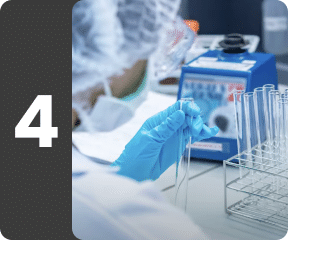Bile Salt & Pigments
Understanding Bile Salt & Pigments
What is Bile Salt & Pigments?
The Bile Salt & Pigments is a urine test that measures the amount of bile salts and bile pigments, which are essential components of bile and help assess bile flow.It helps detect liver and gallbladder diseases, such as jaundice, liver disease, and bile duct obstruction, offering insights into liver and gallbladder health.
Bile salts and bile pigments are substances produced by the liver that help in digestion, particularly in breaking down and absorbing fat in the body. Bile salts emulsify fats for absorption, while bile pigments, like bilirubin, come from breaking down red blood cells. Under normal conditions, these substances are processed by the liver and excreted through the intestines. However, if liver function becomes impaired or there is a blockage in bile ducts, these materials may enter the bloodstream, get filtered by the kidneys and show up in urine.
Consider getting tested if there are symptoms like yellowing of the skin or eyes (jaundice), dark urine, abdominal pain, or unexplained weight loss, as these can indicate liver or bile duct dysfunction. This test is crucial for monitoring liver health and diagnosing conditions that affect bile production and excretion. Frequent monitoring is especially useful for individuals with known liver diseases or those going through treatments that may potentially affect liver function.
Elevated levels of bile pigments in the urine can be a sign of liver disease or blockage in the bile duct, while the presence of bile salts in urine may indicate a liver condition that affects bile production or flow.
The urine sample for the Bile Salt & Pigments test can be collected at any random time throughout the day. However, the urine sample must preferably be the midstream urine (part of urine that comes after the first and before the last stream). In addition, inform the doctor about all the medications or supplements being taken, as these might affect the test results and may require adjustments or temporary discontinuation. Narrate the complete medical history to help doctors relate the clinical and laboratory findings.
Lab test results may vary across laboratories. Interpretations of the test require professional expertise. Do not self-medicate. Always consult the doctor to understand the test results correctly.
What is Bile Salt & Pigments used for?
The Bile Salt & Pigments test is done:
- To diagnose liver diseases such as hepatitis, cirrhosis, or liver cancer.
- To detect obstructions in the bile ducts, such as gallstones or cholestasis.
- To monitor liver function in individuals with known liver disorders.
- To assess the health of the gallbladder and biliary system.
- To identify early signs of liver dysfunction or bile diseases that require medical intervention.
- To monitor patients undergoing treatment for liver disease or gallbladder problems.
- To assess the effectiveness of treatments for liver and bile flow disorders.
What does Bile Salt & Pigments measure?
The Bile Salt & Pigments test measures the presence of bile salts and bile pigments in the urine. These substances are typically produced in the liver and play a role in digestion. Increased concentration of bile salts and pigments may suggest liver disease, blockage of the bile duct, or a condition affecting the production and excretion of bile. Normally, bile salts are processed and excreted via the digestive system, but when the liver or bile ducts are impaired, these substances may eventually appear in the urine, indicating liver and bile dysfunction. Therefore, this test acts as a marker to evaluate liver health, identify bile-related problems, and guide medical treatment or interventions.
Answers to Patient Concerns & Frequently Asked Questions (FAQs) about Bile Salt & Pigments
Frequently Asked Questions about Bile Salt & Pigments
Q. What is the Bile Salt & Pigments test?
Q. Why should I get the test done?
Q. What are bile salts and bile pigments?
Q. Do I need to fast before getting the Bile Salt & Pigments test?
Q. What do elevated levels of bile salts and bile pigments in the urine mean?
Q. How should I prepare for this test?
Q. What other tests may be ordered with the Bile Salt & Pigments test?
Q. How does Tata 1mg ensure accurate lab test results?
Book a Bile Salt & Pigments test at home near me





Other tests









